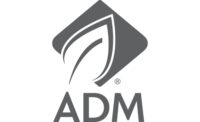Diversity Training
By Dan Malovany
With the onslaught of new variety breads and rolls hitting store shelves, bakers need skilled bakers and versatile mixing systems to produce baked goods more consistently.
Location, location, location. That’s the long-standing mantra in the real estate market, especially with today’s high-risk mortgage crisis and lack of liquidity. If the location isn’t great, even the hippest, trendiest house may not sell for months.
In the baking industry, it’s all about variety, variety, variety. That’s especially true in the bread aisle, where the selection of breads, buns and rolls is becoming more diverse than ever. The proliferation of new products, however, can pose challenges for those operators working in the front end of the production line. A combination of ongoing training and new technology is required to consistently crank out products with a wide range of mixing times, dough temperatures and other parameters.
“With this variety comes different mixing requirements,” notes Larry Gore, director of international sales and marketing for AMF, based in Richmond, Va.
“From white breads to multigrain breads to diet breads — and from hamburger funs to ciabatta to flour tortillas and more — all of these products have different mixing requirements,” he adds. “Today’s horizontal mixers must be flexible by design with precise mixing control.”
Clearly, the popularity of whole grain breads and rolls provide a host of new challenges. In general, notes Dane Belden, president of Sidney, Ohio-based Peerless Group, these hearty breads have stiffer doughs and require more power during the mix than non-whole grain products do.
Sanitation and the need to watch for allergens also have emerged as issues, with so many products being produced on a single line, he adds.
Moreover, Belden says, there’s also the ongoing challenge of training, since finding skilled labor remains difficult.
At the International Baking Industry Exposition, Peerless will showcase some control systems that address the issue of skilled labor, as well as accommodate the increasing diversity of the workforce.
“The software that operates the machine will have much more of an intuitive feel,” Belden says. “There will be much more picto-graphs — as opposed to screens full of numbers — to deal with an operator whom may not be conversant with the English languages.
“Our controls are now to a large degree multilingual so an operator can log into a machine and have the machine know the operator’s number, and therefore, can convert its language to that of the specific operator,” he continues.
Gore adds that expanded electronic control systems provide tighter controls and allow operators to monitor and make adjustments based on ingredient variability.
“Operator controls bring more graphical information on the development of the dough in the form of trends and alarms to proactively detect any deviation in the mixing process parameters,” he explains. “Energy, temperature, ingredient sponge and final dough weights can be used to confirm and ensure quality.”
Cool Ideas for Mixing
Since dough temperature is so critical to producing consistent products, AMF has added new cooling features to its Artic Cooling Options, which now include bowl-end, breaker bar and agitator cooling.
The systems, Gore says, offer multiple benefits, including the capability to cool dough while it’s mixing and to assure that certain batches stay at specific temperatures to optimize product quality and downstream machinability.
Peerless also offers a breaker bar and agitator cooling with its ColdBar and ColdBar Plus features. By cooling these surfaces, the dough remains in contact with a refrigerated surface during the mix cycle to kick out batches in the low 70°F range.
In recent years, Gore says, many bakers have switched to AC Inverter Speed controls instead of the traditional two-speed motors on mixers. The AC inverters reduce energy usage and add flexibility to produce a wider variety of products.
Products such as scones or cookies with fruit and nut inclusions also have become increasingly popular in recent years, but the batters pose challenges because they require gentle mixing.
Tonelli Group, based in Parma, Italy, recently introduced Triple Tool Planetary Mixer, which allows for rapid incorporation of ingredients. The mixer’s variable-speed drive and PLC process controls allow bakers to mix products that previously were difficult to make in industrial capacities, notes Kevin Wilkinson, North American sales representative for the group. It also reduces mix times.
At IBIE, Tonelli will show its 600-liter, 1000-lb. capacity Triple Tool Planetary Mixer, which has the latest in automatic clean-in-place washing systems, Allen Bradley color touch screen controls and automatic ingredient batching.
For high production flexibility, Sancassiano S.p.A., represented by Sante Fe Springs, Calif.-based Allied Bakery & Equipment in United States, offers an automatic mixing system with translator device. It essentially is composed of a dough mixer and an elevator and allows automatic mixing in tight spaces. The system can be equipped with any type of mixer from twin arms and double spiral to French fork and Sancassiano’s Hydra systems.
Meanwhile, CMC America of Joliet, Ill., offers a wide variety of horizontal mixers. Its stainless steel Triple Roller Bar Mixer, for instance, comes in capacities ranging from 400 lb. to 3,000 lb. All CMC mixers are U.S. Department of Agriculture-accepted and meet the highest baking industry sanitation requirements.
Smart Mixers
This year, Peerless also will feature a mixer with maintenance-free trunion bearings, which allow the bowl to tilt. In the past, these bearings created a maintenance issue because they had to be lubricated during each shift. If they weren’t lubricated, they could eventually seize up, resulting in a possible breakdown of the tilting mechanism.
Then, there was the sanitation issue that’s no more.
“Although they are not located in the product zone, you do use heavy food-grade grease,” says Matt Zielsdorf, vice president of sales and marketing for Peerless. “It can become a mess.”
The Peerless Group also has redesigned its Tine Dough Feeder for enhanced sanitation and maintenance. The system efficiently breaks, spreads and forwards the dough for even feeding of downstream dough-forming machines. It can handle everything from corn masa to the toughest cookie and biscuit dough.
With production lines running nearly 24/7 and capacity utilization numbers in bakeries reaching new highs, mixers have to run much longer with fewer periods of maintenance, Belden says.
“We’re building software with algorithms that basically self diagnose,” he explains. “It will tell you something is going on before it goes wrong.”
In the future, Belden adds, Peerless will focus on developing machines that can repair themselves.
“There are certain wear items where there are opportunities to put redundancies on the machines,” he says. “It’s all about how do you keep the machines up and running. That’s where a baker gets a return on investment.”
They can get that return on investment while producing even more varieties of new products for its ever-demanding consumer base. Now that’s a win-win proposition.
Editor’s Note: For more information about companies mentioned in this article, visit www.SnackAndBakery.com and click on the Buyer’s Guide tab.



